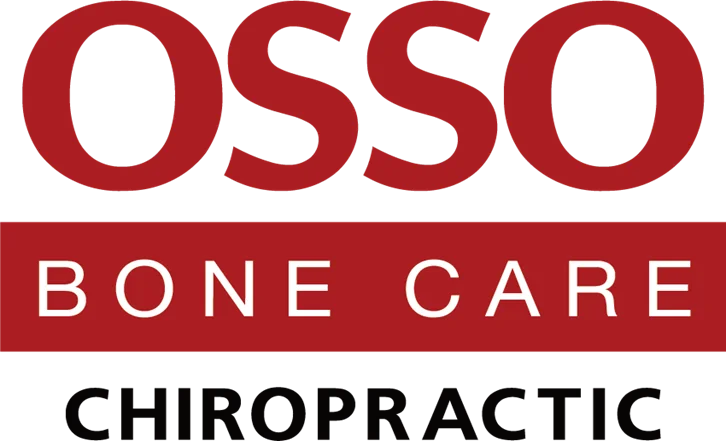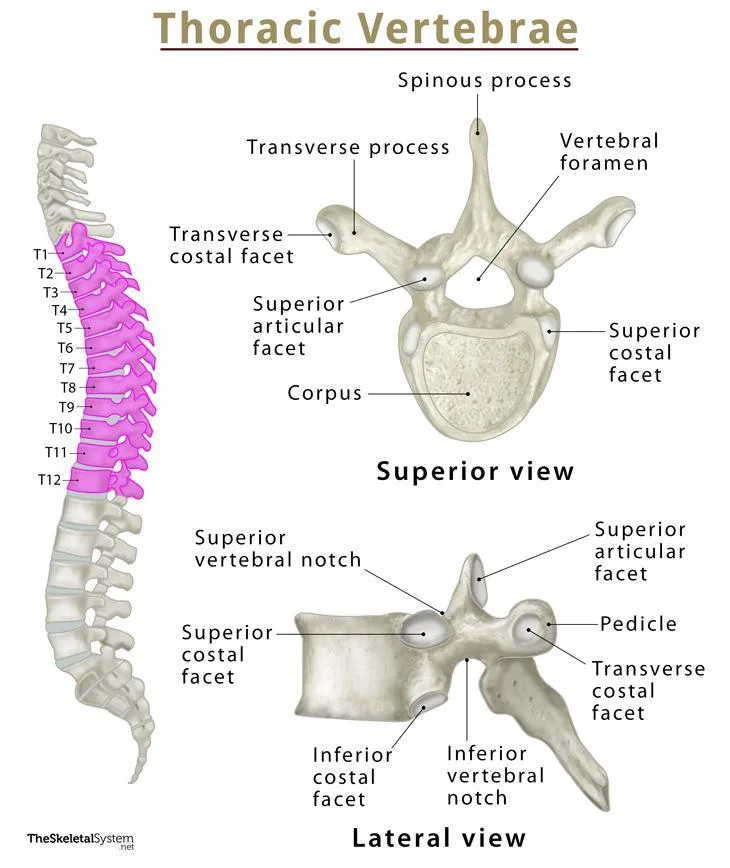Thoracic Vertebrae (T1-T12): An Uncommon Slipped Disc Area
The spine plays a pivotal role in the human body, providing support, flexibility, and stability. But when something goes wrong, especially with the thoracic region, it can impact everything from posture to mobility. This region typically works with the rib cage to protect the body, so in rare cases when a patient may have herniated a disc in this area, the pain can spread to their chest and make it difficult to breathe.
The Thoracic Vertebrae Structure
The thoracic spine consists of 12 vertebrae, labeled T1 to T12, which are located between the cervical (neck) and lumbar (lower back) regions. These vertebrae are the longest in the spinal column and are uniquely designed to support the upper body’s weight and facilitate movement.
The shape of these vertebrae allows them to support both the rib cage and the spine, protecting vital organs like the lungs and heart. It’s this connection to the rib cage that makes thoracic injuries slightly different from injuries in other parts of the spine.
Supported by the Rib Cage
Each of the thoracic vertebrae connects to a pair of ribs, which are attached to the sternum at the front and curve around the back. This arrangement not only offers structural support but also helps protect the heart and lungs.
When the thoracic spine is put under pressure, the ribs absorb much of the impact, reducing the risk of severe injury to the vertebrae and intervertebral discs. Because of the ribs’ protective nature, injuries to the thoracic spine—while still possible—are less likely to be as severe as those that occur in the lumbar (lower back) or cervical (neck) regions.
The Risk of Slip Discs in the Thoracic Spine
One might think that a slip disc, or herniated disc, could easily affect the thoracic spine. However, slip discs in this region are quite rare. In fact, studies suggest that only around 1-2% of all herniated discs occur in the thoracic area. The primary reason for this is the structural support provided by the rib cage and the fact that the thoracic spine is less mobile than the cervical and lumbar regions.
That said, slip discs can still happen in the thoracic spine, particularly if there’s trauma or abnormal stress on the area. Car accidents, heavy lifting, and poor posture can put undue strain on the discs, leading to bulging or rupturing. In some cases, an injury to the thoracic spine might compress nearby nerves, leading to symptoms such as pain, tingling, or numbness in the upper back or chest.
Read about higher risk areas of your spine in this article.
Effects of a Thoracic Spine Injury
When injuries do occur in the thoracic spine, the effects can vary. Common symptoms of a thoracic spine injury include pain or discomfort in the upper back, stiffness, limited mobility, and, in some cases, difficulty breathing. The impact on the ribs can sometimes lead to pain that feels like a deep bruise or tightness in the chest area. Depending on the severity of the injury, symptoms can also include numbness, tingling, or weakness in the arms or legs.
In rare cases, if a herniated disc or another injury puts pressure on the spinal cord or nerves, it can lead to more serious conditions, such as paralysis. However, such cases are less common, and most thoracic spine injuries are treatable with conservative care like physical therapy, chiropractic care and pain management.
Treatment of Thoracic Spine Injuries

If you suspect an injury to your thoracic spine, it’s crucial to seek professional help. Our chiropractors can determine the source of the problem by examining your full spine x-rays. Depending on the severity of the injury, they may recommend a variety of treatments.
For minor injuries, rest, over-the-counter pain relievers, and physical therapy are usually sufficient. Physical therapy will focus on strengthening the muscles surrounding the spine, improving posture, and preventing future injuries.
Take Care of Your Thoracic Vertebrae with Osso Bone Care
The thoracic spine plays an important role in the overall structure and health of the spine. Thanks to the rib cage, this area of the body is relatively protected from injury compared to other spinal regions. However, injuries do occur, and when they do, they can lead to symptoms ranging from mild discomfort to serious nerve problems. Knowing the signs of injury and understanding how the thoracic spine functions is essential for maintaining good spinal health.

